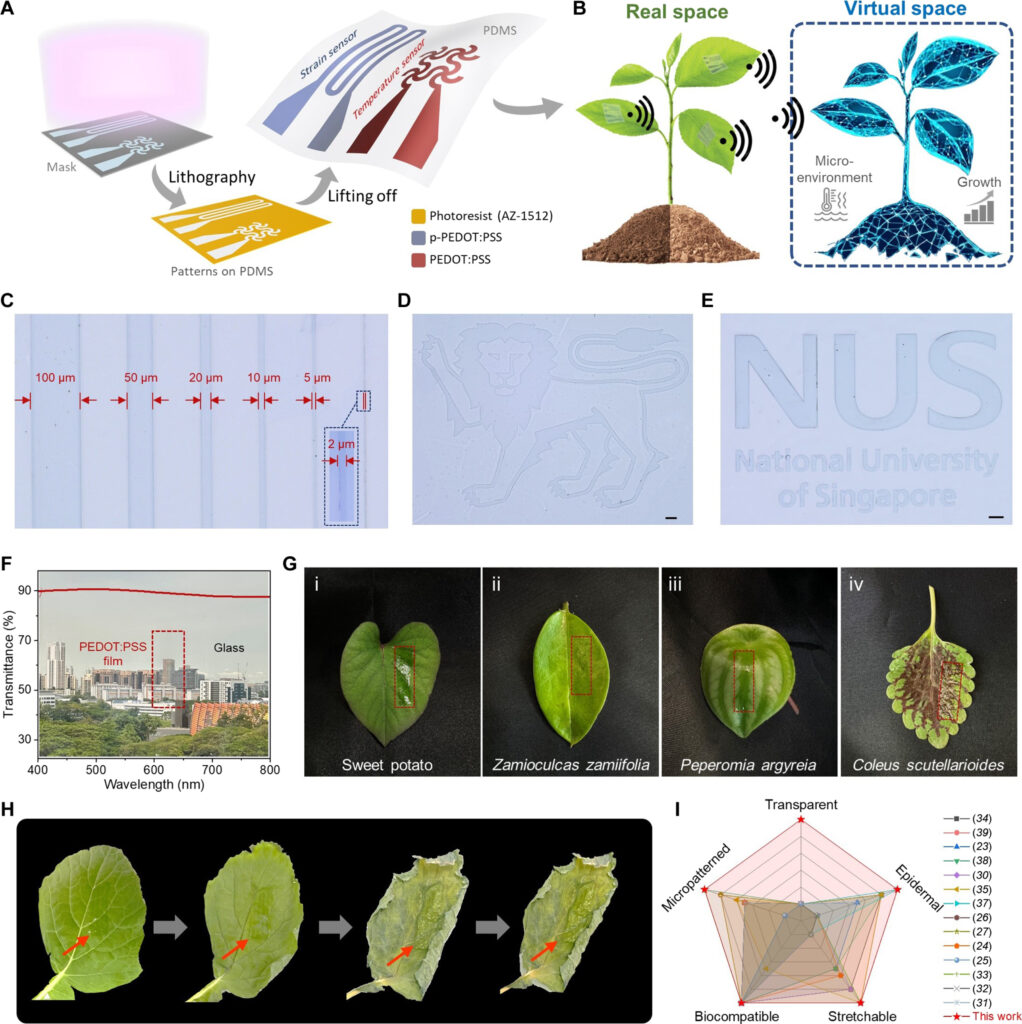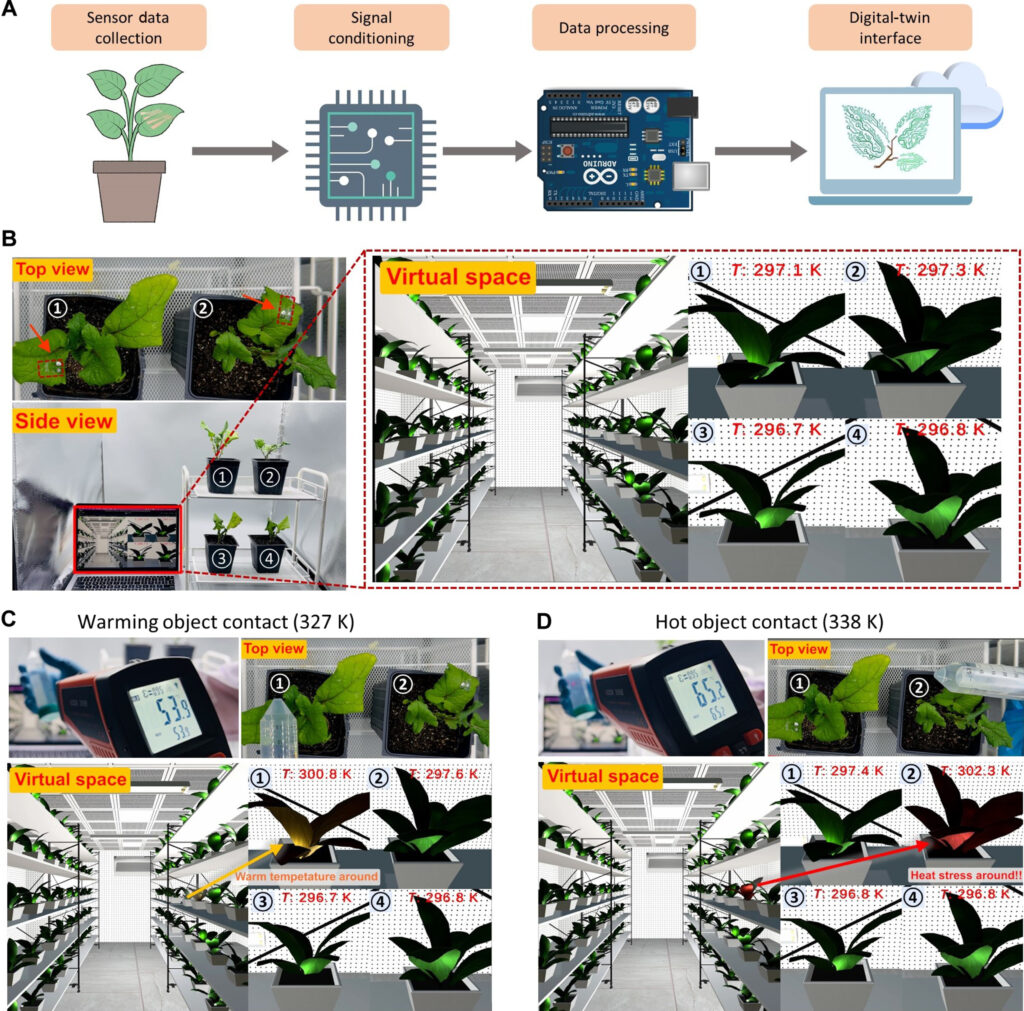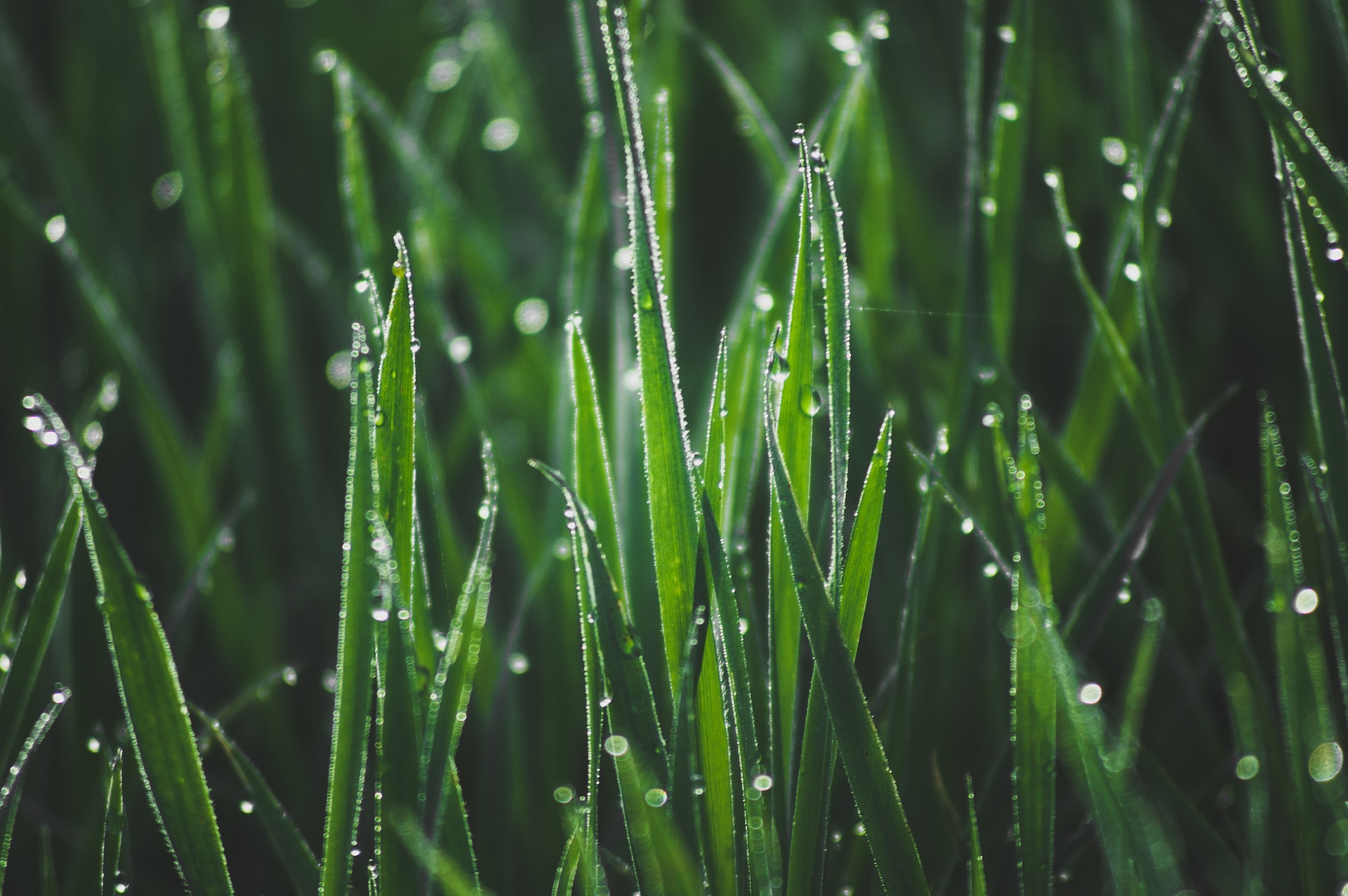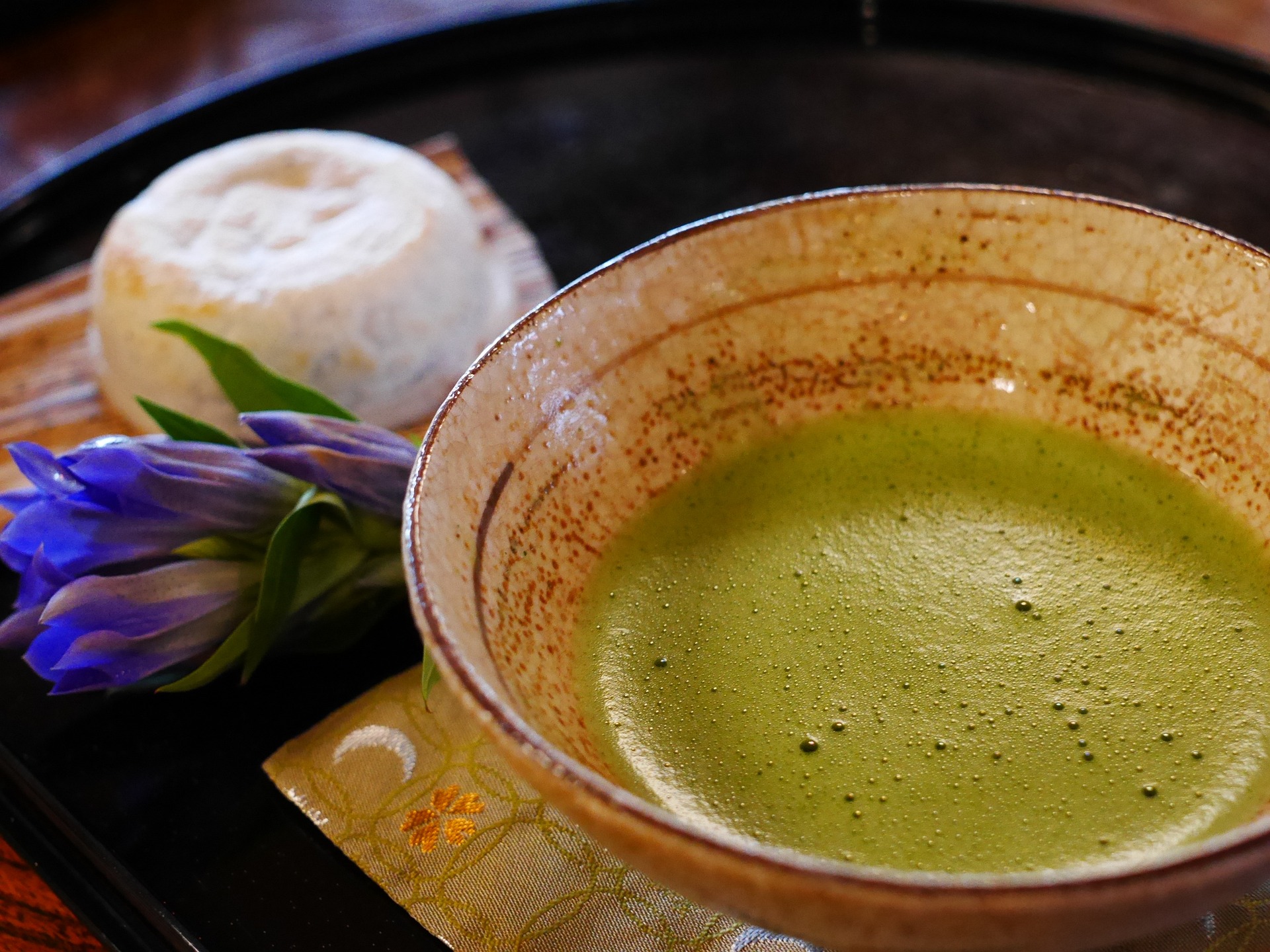Plant growth monitoring
Research in the field of plant growth monitoring using various sensors is increasing. There have been papers introduced before, including one that involved embedding gel-like electrodes into plants. Besides this, various developments have been made, such as using soft sensors wrapped around plants, types that attach with adhesive tape, and methods that involve printing on plants using inkjet techniques or vapor polymers. All these methods are viable for monitoring plants, but many are limited to short-term use, often because these devices can harm plant growth. Additionally, many devices are opaque, inhibiting photosynthesis, which makes them unsuitable for long-term use. The device introduced here is light, thin, and transparent, representing an innovative solution that can remain on plants without causing significant harm.
All-organic transparent plant e-skin for noninvasive phenotyping
Plant e-skin
The core material of the device is an unfamiliar substance called poly(3,4-ethylenedioxythiophene) polystyrene sulfonate (PEDOT:PSS). PEDOT:PSS is a flexible, transparent organic material with excellent electrical conductivity, making it ideal for plant monitoring. The device is completed by placing the PEDOT:PSS circuit on a similarly stretchable and transparent polydimethylsiloxane (PDMS) substrate. The technique of arranging these materials together is crucial and appears to be newly developed.
The device is just 4.5μm thick, transparent, ultra-thin, and stretchable, equipped with strain and temperature sensors. When installed on the leaf epidermis, it allows continuous and real-time monitoring of plant growth and surface temperature.
It has a transmittance rate of over 85% in the wavelength range of 400–700 nm, covering the wavelengths necessary for plant photosynthesis, which means it hardly inhibits photosynthesis.
Concerns about whether it impedes respiration when covering the leaf are addressed, as the device is primarily adhered to the surface of leaves with fewer stomata. Its placement on the surface allows for unobstructed photosynthesis. Additionally, both PEDOT:PSS and PDMS, the components of the device, are permeable to gases and vapors, ensuring that the stomata on the covered leaf surface can still function effectively.

What can be measured with Plant e-skin.
It has been tested on the young leaves of living Brassica species.
In experiments with the strain sensor, a clear growth pattern was observed where the plant “grows minimally during the day” and “mainly grows at night.” The device also captured changes in growth rate under various abiotic stress conditions (such as hot, cold, or dry).
The temperature sensor accurately captures fluctuations in leaf surface temperature, allowing for monitoring of the thermal stress the plant is experiencing.
Such monitoring enables real-time assessment of whether the plant is growing properly and whether it is under stress, without imposing any stress on the plant.
Recreating plant growth in VR space.
Data collected with Plant e-skin has been projected into VR space, creating what is called virtual growth monitoring. This appears to be an attempt to make it easier to understand the growth and stress conditions of plants when managed by humans. In the virtual space, for example, leaves experiencing high temperature due to heat stress can be displayed in red, and leaves that are growing adequately or not can be color-coded. This system seems to make changes that are not noticeable by just looking at the plants more understandable. It is likely that the technology can project data other than that from Plant e-skin, suggesting a wide range of applications.

For realizing “Smart agriculture,” sensors are essential.
Digital transformation is being pursued in various fields, and agriculture is no exception, with ongoing development towards “smart agriculture” every day. The core of agriculture is “cultivation management technology.” Cultivation management often relies on experience and intuition, partly because plant growth is slow and changes are difficult to capture. With the certain progression of an aging population and a decrease in the productive workforce, it is essential to have technology that allows for some degree of management without the need for extensive experience. Devices like the one introduced here can be of great help in this regard. While there are many unknowns, including cost and potential long-term harm, the benefits of using such technology are likely to outweigh the risks. I feel that we have already entered a phase where we must proceed while taking risks to maintain future agricultural productivity, and it is desirable to rapidly disseminate new and potentially useful technologies.
I would like to hear your opinions as well.



コメント